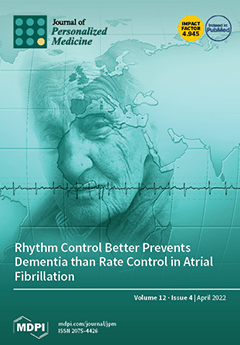Open AccessArticle
Pulmonary Lymphangitis Poses a Major Challenge for Radiologists in an Oncological Setting during the COVID-19 Pandemic
by
Roberta Fusco, Igino Simonetti, Stefania Ianniello, Alberta Villanacci, Francesca Grassi, Federica Dell’Aversana, Roberta Grassi, Diletta Cozzi, Eleonora Bicci, Pierpaolo Palumbo, Alessandra Borgheresi, Andrea Giovagnoni, Vittorio Miele, Antonio Barile and Vincenza Granata
Cited by 10 | Viewed by 3137
Abstract
Due to the increasing number of COVID-19-infected and vaccinated individuals, radiologists continue to see patients with COVID-19 pneumonitis and recall pneumonitis, which could result in additional workups and false-positive results. Moreover, cancer patients undergoing immunotherapy may show therapy-related pneumonitis during imaging management. This
[...] Read more.
Due to the increasing number of COVID-19-infected and vaccinated individuals, radiologists continue to see patients with COVID-19 pneumonitis and recall pneumonitis, which could result in additional workups and false-positive results. Moreover, cancer patients undergoing immunotherapy may show therapy-related pneumonitis during imaging management. This is otherwise known as immune checkpoint inhibitor-related pneumonitis. Following on from this background, radiologists should seek to know their patients’ COVID-19 infection and vaccination history. Knowing the imaging features related to COVID-19 infection and vaccination is critical to avoiding misleading results and alarmism in patients and clinicians.
Full article
►▼
Show Figures






